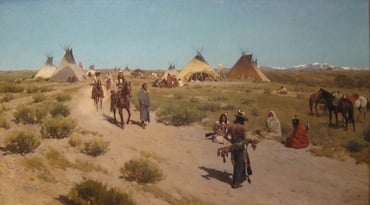Know (sexually)
This can, of course, be a wonderful thing: It is essential for our journey to heaven, and is the reason for the holiness of marriage. But when the men represent falsity it can also be horrendously twisted, as in the attempted homosexual rape in Sodom (Genesis 19) and the rape of the concubine in Gibeah (Judges 19). In a general sense, men represent things of the intellect -- facts, ideas, knowledge, everything from the deepest truths to the most pernicious falsities about life and the Lord. Women in general represents things of affection -- desire, passion, caring, everything from the most exalted love for the Lord to the darkest hatred. When a man “knows” a woman in the Bible, then, it represents a joining together of those intellectual and affectionate faculties. “Know" is also often used in connection with virginity. A women who has “not known a man” represents the affection for truth, unsullied by falsity.
Dwell

To “dwell” somewhere, then, is significant – it’s much more than just visiting – but is less permanent than living there. And indeed, to dwell somewhere in the Bible represents entering that spiritual state and engaging it, but not necessary permanently. A “dwelling,” meanwhile, represents the various loves that inspire the person who inhabits it, from the most evil – “those dwelling in the shadow of death” in Isaiah 9, for example – to the exalted state of the tabernacle itself, which was built as a dwelling-place for the Lord and represents heaven in all its details. Many people were nomadic in Biblical times, especially the times of the Old Testament, and lived in tents that could be struck, moved and raised quickly. Others, of course, lived in houses, generally made of stone and wood and quite permanent. In between the two were larger, more elaborate tent-style structures called tabernacles or dwellings; the tabernacle Moses built for the Ark of the Covenant is on this model.






